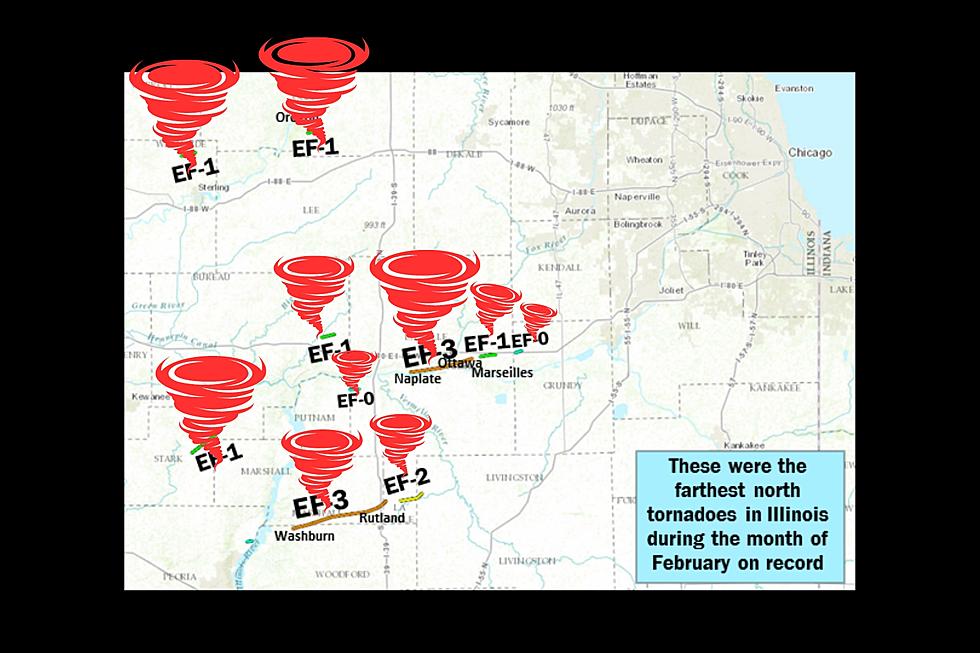
Six Years Ago 10 Tornadoes Were Confirmed In Illinois On The Same Day
On February 28th, 2017, the state of Illinois was hit by a total of ten tornadoes, seven of which were confirmed in the NWS Chicago County Warning Area. The other three were confirmed in the NWS Quad Cities CWA. The strongest of the tornadoes were two that were rated EF-3 on the Enhanced Fujita Scale, which is used to measure the intensity of tornadoes.
One of the EF-3 tornadoes impacted the communities of Naplate and Ottawa, causing significant damage to the area. Unfortunately, two people lost their lives, and fourteen others were injured. The second EF-3 tornado impacted Washburn and also caused significant damage. The other tornadoes ranged in intensity from EF-0 to EF-1.
SEE MORE: Watch Lightning Strike Destroy Utility Pole Along IL Highway
In addition to the tornadoes, the area was also hit by severe hailstorms. The largest hail reported in the area was in Ottawa, where it reached the size of baseballs. The severe weather wasn't limited to Illinois, either. Tornadoes were also reported in other nearby states, including Missouri, Iowa, Indiana, Kentucky, and Michigan.
While the damage caused by the 2017 tornadoes was significant, it's a reminder of the importance of being prepared for severe weather. Having an emergency plan in place, staying informed about weather conditions, and following the guidance of local officials can all help keep you and your family safe during severe weather events.
Here are a few things you can do:
- Have an emergency kit ready with essentials like water, food, and first aid supplies.
- Keep an eye on weather alerts and warnings. Consider signing up for alerts on your phone or via email.
- Know where you would go if a tornado warning is issued. This could be a basement, storm shelter, or an interior room on the lowest level of your home.
- Practice your emergency plan with your family so that everyone knows what to do in case of a tornado.
- Finally, stay informed during and after the storm. Listen to local officials and be patient as recovery efforts take place.
LOOK: The most expensive weather and climate disasters in recent decades
KEEP READING: What to do after a tornado strikes
